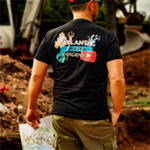It’s Winter in New Jersey but the weather is changing,
when should I start feeding my koi?
Hello, fellow fish enthusiast! If you’re the proud caretaker of a pond full of Koi in the beautiful Garden State, you’ve come to the right place. Today, we’re diving into the specifics of feeding your Koi during the chilly winter and the promising early spring months.
Understanding your Koi
First, let’s get to know our Koi friends a little better. Originating from Japan, Koi are resilient and can adapt to a variety of climates. However, they are cold-blooded creatures which means their metabolism is directly tied to the temperature of their environment. This is a vital piece of information when considering their dietary needs throughout the year, especially during the colder months.
The Winter Months and your Fish Friends
As winter sets in and the temperatures drop, your Koi’s metabolism slows down. They enter a semi-hibernation state, known as “torpor,” and their need for food decreases drastically. In fact, when water temperatures plunge below 50°F (10°C), it’s best to stop feeding your Koi altogether. Why? Their slowed metabolism means food can sit in their stomach and rot, leading to potential health issues.
But don’t worry, Koi are well-equipped to handle this fasting period. They build up extra fat during the warmer months which they utilize for energy during the winter. So while the landscape is covered in a blanket of snow, your Koi will be happily swimming below the icy surface, living off their stored fat.
Early Spring feeding Protocol in NJ for our Fish Friends
In early spring, opt for an easily digestible, wheat-germ based food. These foods are light on the digestive system, giving your Koi a gentle reintroduction to regular feeding. Feed small amounts and observe your Koi. If they eat quickly, you can gradually increase the amount.
Be mindful of the temperature fluctuations that early spring can bring. If the temperature dips below 50°F (10°C) again, it’s best to pause feeding, as your Koi may return to their semi-hibernative state.
Feeding Koi fish in your New Jersey pond during winter and early spring is a delicate balance, dictated by water temperature and the changing metabolism of your Koi. Remember, under 50°F – no food, between 50°F and 60°F – wheat-germ food, and above 60°F – protein-rich diet. Listen to your Koi, observe their behavior, and adjust accordingly.
With these tips in mind, your Koi will not only survive, but thrive during the winter and early spring months. Happy Koi keeping!
- How do I know if my fish are getting enough oxygen during the winter in New Jersey?
- Can I run my waterfall and pond all winter in New Jersey?
- Pond net on all winter? What should you look out for in New Jersey winters?
- Is string algae harmful to my New Jersey Pond during the Winter?
- How can I defend against Mink during the winter in New Jersey?
Your search for outdoor tranquility ends here. Contact us at 973-627-0515 to reach Atlantis Water Gardens, where we turn ordinary spaces into extraordinary aquatic escapes. Don’t wait; take the plunge today!

Founder & Master Pond Builder
Jaak Harju is the founder and master pond builder of Atlantis Water Gardens, a family-owned design and build firm specializing in natural-looking ponds, waterfalls, and ecosystem water features. Since 2000, Jaak has dedicated his career to creating outdoor environments that inspire connection with nature.
With a background in landscape design and construction, Jaak brings artistry and precision to every project. He’s known nationally for his creative stonework, ecological pond design, and educational outreach within the pond-building community. Through his work, videos, and collaborations with other Aquascape-certified contractors, Jaak has helped redefine backyard water features as sustainable, living ecosystems.
